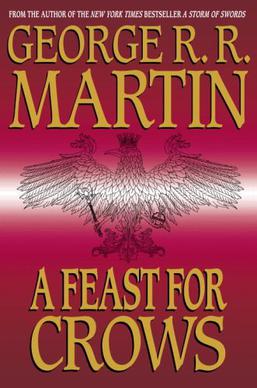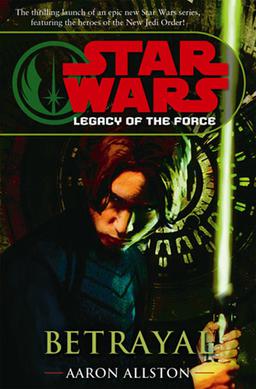
Jacqueline Susann was an American novelist and actress. Her iconic novel, Valley of the Dolls (1966), is one of the best-selling books in publishing history. With her two subsequent works, The Love Machine (1969) and Once Is Not Enough (1973), Susann became the first author to have three novels top The New York Times Best Seller list consecutively.

Drizzt Do'Urden is a fictional character appearing in the Forgotten Realms campaign setting for the Dungeons & Dragons fantasy role-playing game. Drizzt was created by author R. A. Salvatore as a supporting character in the Icewind Dale Trilogy. Salvatore created him on a whim when his publisher needed him to replace one of the characters in an early version of the first book, The Crystal Shard. Drizzt has since become a popular heroic character of the Forgotten Realms setting, and has been featured as the main character of a long series of books, starting chronologically with The Dark Elf Trilogy. As an atypical drow, Drizzt has forsaken both the evil ways of his people and their home in the Underdark, in the drow city of Menzoberranzan.

A Feast for Crows is the fourth of seven planned novels in the epic fantasy series A Song of Ice and Fire by American author George R. R. Martin. The novel was first published on October 17, 2005, in the United Kingdom, with a United States edition following on November 8, 2005.

Return to Peyton Place is a 1959 novel by Grace Metalious, a sequel to her best-selling 1956 novel Peyton Place.
Dame Susan Elizabeth Hill, Lady Wells is an English author of fiction and non-fiction works. Her novels include The Woman in Black, which has been adapted in multiple ways, The Mist in the Mirror, and I'm the King of the Castle, for which she received the Somerset Maugham Award in 1971. She also won the Whitbread Novel Award in 1972 for The Bird of Night, which was also shortlisted for the Booker Prize.

Daniel Silva is an American journalist and author of thriller and spy novels.
Kay Hooper is a New York Times bestselling American author of more than 60 books.

The Legacy of the Force is a series of nine science fiction novels, published from 2006 to 2008, set in the Star Wars expanded universe. The series takes place approximately 40 years after the events of the film Star Wars Episode IV: A New Hope. The series picks up around 11 years after the events of the New Jedi Order saga. Published by American imprint Del Rey Books, the series was written by Troy Denning, Aaron Allston and Karen Traviss in an alternating cycle.

Tess Gerritsen is the pseudonym of Terry Gerritsen, an American novelist and retired general physician.

Raina Telgemeier is an American cartoonist. Her works include the autobiographical webcomic Smile, which was published as a full-color middle grade graphic novel in February 2010, and the follow-up Sisters and the fiction graphic novel Drama, all of which have been on The New York Times Best Seller lists. She has also written and illustrated the graphic novels Ghosts and Guts as well as four graphic novels adapted from The Baby-Sitters Club stories by Ann M. Martin.

Adriana Trigiani is an American best-selling author of eighteen books, playwright, television writer/producer, film director/screenwriter/producer, and entrepreneur based in New York City. Trigiani has published a novel a year since 2000.
Through a Glass Darkly may refer to:
North and South is a 1980s trilogy of best-selling novels by John Jakes which take place before, during, and after the American Civil War. The saga tells the story of the enduring friendship between Orry Main of South Carolina and George Hazard of Pennsylvania, who become best friends while attending the United States Military Academy at West Point but later find themselves and their families on opposite sides of the war. The slave-owning Mains are rural gentleman planters while the big-city Hazards live by manufacturing and industry, their differences reflecting the real divisions between North and South which ultimately led to war.
Gregg Olsen is a New York Times, USA Today and The Wall Street Journal bestselling author of nonfiction books and novels, most of which are crime-related. The subjects of his true crime books include convicted child rapist and school teacher Mary Kay Letourneau, product tampering killer Stella Nickell, fasting specialist Linda Burfield Hazzard, and former Amishman and convicted murderer Eli Stutzman.
Barbara Parker was an American mystery writer. She wrote 12 novels, the first of which, Suspicion of Innocence, was a finalist for the Edgar Allan Poe Award for best first mystery novel by an American author. Parker was on the national board of the Mystery Writers of America and was the chair of its membership committee for two years.

Jewels is a 1992 historical romance novel by Danielle Steel. In the novel, 75-five-year-old Sarah, Duchess of Whitfield, looks back on her long and eventful life. It is Steel's 30th novel.

Dolores is the final novel of American writer Jacqueline Susann. Published by William Morrow in 1976, it is a roman à clef based on the life of Jacqueline Kennedy. It first appeared in the February 1974 issue of the Ladies' Home Journal, seven months before Susann's death from cancer.

Lauren Kate is an American author of adult and young adult fiction. Her books have been translated into over thirty languages, have sold more than eleven million copies worldwide, and have spent combined months on the New York Times Best Seller list.
Karleen Koen is an American novelist perhaps best known for her 1986 debut historical fiction novel, Through a Glass Darkly.
This bibliography contains is a list of works from American author Christine Feehan.












